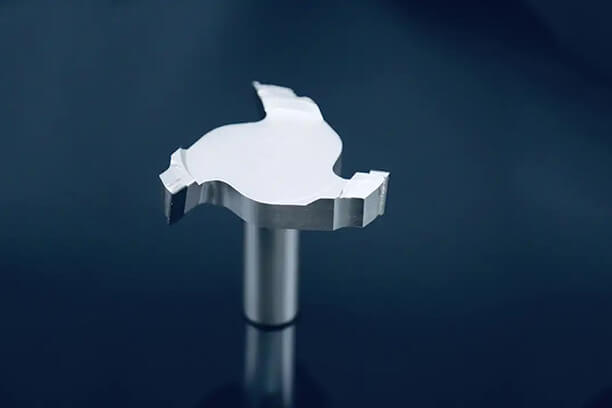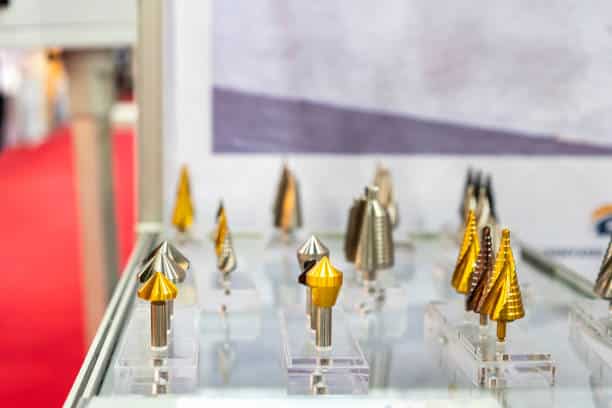When performing CNC milling operations, the choice of machine and cutting tool plays a significant role in determining the surface finish and machining speed of the final parts. Depending on your desired purposes, there exists a broad variety of milling cutters to choose from.
In this article, we will focus on fly cutters in milling machines, including their types, distinctions from face mills, considerations for surface finishing, and common applications. By exploring these topics, we aim to provide a comprehensive understanding of the specific characteristics of fly cutters.
What is a Fly Cutter?
A fly cutter is a rotary cutting tool with a single point that is used to machine and produce finished plane surfaces by moving sideways. Although these versatile tools can be used with various machines, they are primarily employed on milling machines to machine large and flat surfaces. The construction of a fly cutter typically consists of a body that holds one or two tool bits. In most cases, fly cutters are equipped with a holder, thrust washer, drawbolt, and a left-hand carbide cutting tool.
Many fly cutters feature a cylindrical center body that accommodates one tool bit. This tool bit is usually a standard left-hand turning tool positioned at an angle of 30 to 60 degrees. On the other hand, fly cutters with two tool bits have one bit attached to each end. These bits are mounted perpendicular to the main axis of the bar stock. Each tooth of the cutting edge requires more power from the machine. Consequently, multi-toothed cutters may not work well on small machines due to limitations in rigidity and power.
Moreover, fly cutters are generally suitable for mild cutting operations rather than heavy-duty cutting tasks. If you are working with a light-duty mill, a single tooth cutter would likely provide the best performance. Fly cutters are often secured in a specially angled holder, allowing the entire unit to rotate while the tool bit makes wide and shallow facing cuts. These cuts can be performed on both soft materials like aluminum and hard materials like steel. While fly cutters and face mills are similar in terms of being designed for face milling and having replaceable cutters, they have various differences in other aspects.
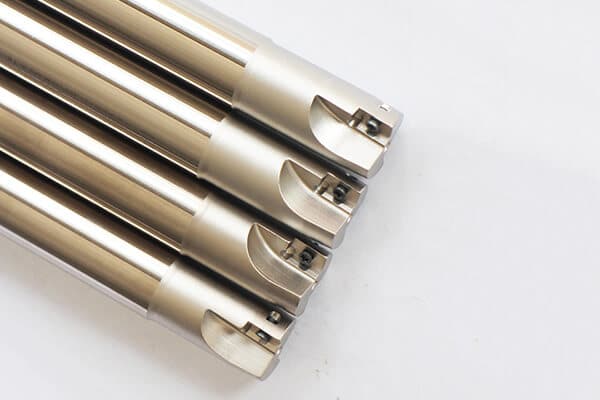
Types of Fly Cutters
Fly cutters are typically manufactured to adhere to industrial standards. However, the different types of fly cutters vary in important factors such as the type of material being cut, the cutting speed and the feed rate. It’s crucial to select the appropriate type of milling cutter based on these considerations when aiming to finish large and flat surfaces. Now, let’s see the various commonly used types of fly cutters.
1. Point Cutter
The point cutter is specifically designed for cutting densely populated corals, which come in both long (500 mm) and short (300 mm) sizes. These cutters typically feature blades with two cutting edges, allowing for precise milling cuts. Moreover, the needle-like points of the cutter extend to hard-to-reach areas and can be easily retracted into the handle for safe storage.
2. Rotary Cutting Tool
The rotary cutting tool is widely used for cutting, drilling, and grinding numerous fabrics with remarkable speed and precision, while ensuring the patterned cutting line remains intact. In fact, skilled experts often employ this kind of fly cutter to efficiently cut multiple layers of fabric, up to eight layers, in a single milling session.
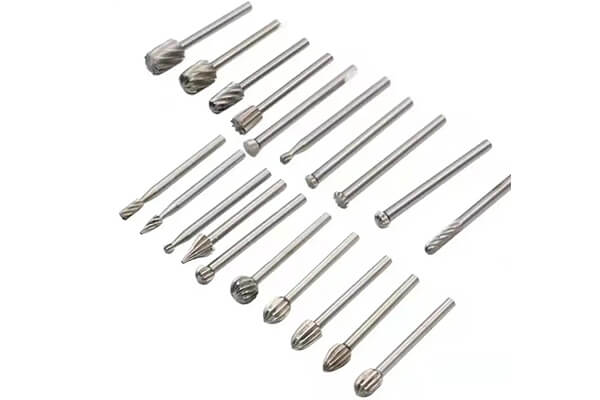
3. Rotary Carving Tool
The rotary carving tool is commonly utilized for performing carving operations on hard materials such as wood and blown glass, and even carving against the direction of the grain.
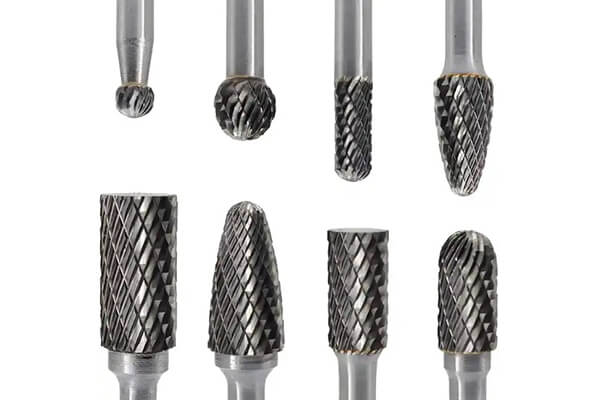
Components & Specifications of a Fly Cutter
Let’s take a look at the distinctive features and specifications of fly cutters:
Components of a Fly Cutter
Fly cutters typically consist of a couple of main components as follows:
- Holder
- Fasteners
- Draw bolt
- Thrust washer
- Cylindrical body
- A left-handed carbide cutting tool
A single tool bit is typically held within the centrally situated cylindrical body of the fly cutter used in milling operations. On the other hand, fly cutters equipped with two tool bits are commonly secured with one bit on each end. To ensure proper alignment, these fly cutter bits are placed in a specialized angled holder set at a 90-degree angle to the main axis of the bar stock. Additionally, a left-handed carbide tool is typically positioned at an angle of 30 to 60 degrees.
Specifications and Size of a Fly Cutter
There are various function factors to consider when using fly cutters. Depending on the nature of your milling project, it’s essential to ensure that each fly cutter bit receives sufficient power from the milling machine. For example, rotary cutting tools are equipped with variable speed motors that cater to both light and heavy cutting operations, offering a power range of 0 to 30000rpm.
Furthermore, it’s important to match the length of the fly cutter body with the appropriate length of the tool bit for optimal performance. For instance, the main body of a rotary cutting tool is equipped with a spindle lock mechanism that enables the opening and closing of the 1/8-inch collet, which allows for the attachment of standard rotation tools. Here are some additional important considerations to bear in mind:
- The fly cutter with a 3/4-inch body requires a 3/16-inch tool bit.
- The fly cutter with a 1-1/8-inch body requires a 1/4-inch tool bit.
- The fly cutter with a 1-3/8-inch body requires a 5/16-inch tool bit.
Fly Cutter Vs. Face Mill: Their Differences
Both fly cutters and face mills can be used for machining the face of a plate. However, there are distinct differences between these two tools. Let’s explore it:
1. Cutting position
When properly positioned, fly cutters can cover extensive surfaces in a single milling session, resulting in a highly flat surface. In contrast, face mills have cutting edges with varying heights, which makes them more suitable for creating textured or ridged surfaces.
2. Number of inserts and removal rate
Fly cutters make use of one or two inserts at a lower cutting speed to remove excess material from workpieces during milling operations. Conversely, face mills utilize multiple inserts at a higher cutting speed, making them better suited for heavy material removal. Although fly cutters may not be as fast as face mills, they provide a more even and smooth surface finish. Additionally, the height of inserts in face mills cannot be individually adjusted, leading to variations in chip loads among the different inserts.
3. Finishing quality
Face mills deliver high-quality surface finishes in milling operations. In contrast, fly cutters utilize skim cut techniques to achieve an even finer finish. However, for high-volume projects, opting for a larger face mill is generally more advantageous due to its ability to provide faster cutting speeds per operation.
4. Cost
Face mills require heavy, sturdy, and high-powered machines with a large spindle power, making them cost-consuming. On the other hand, milling fly cutters are better suited for smaller machines with lower spindle power and are significantly less expensive. Furthermore, the more inserts needed, the higher the operating costs. As a result, fly cutters are a more affordable option than face mills, as they only require one or two inserts.
5. Operation requirements and effect
A fly cutter can be used on lighter and less powerful machines, although it may have a lower metal removal rate. On the other hand, a face mill requires greater power and rigidity compared to a fly cutter of the same diameter. Face mills are preferred for their rigidity, the ability to replace inserts without affecting the effective cutter diameter or tool length offset, and their capability to handle deeper cuts.
What Should You Consider Using Fly Cutters for Finishing Surfaces?
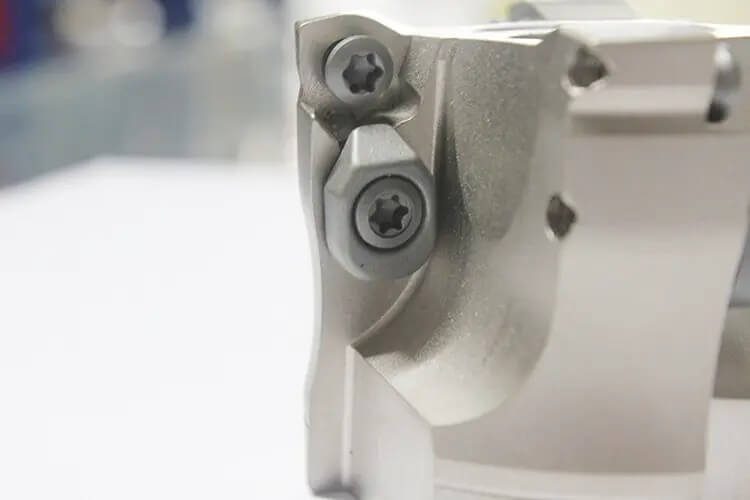
Before using fly cutter tools for surface finishing, it’s essential to take into account certain factors as listed below:
1. Point Radius
Experienced machinists adhere to a guideline of maintaining the point radius of the fly cutter tool below 1.5mm. This is because a smaller point radius corresponds to a slower feed rate, which in turn leads to a finer finish. It is important to avoid using fly cutters with large tip radii, as they increase cutting pressure and can cause deflection. This deflection can ultimately result in undesirable outcomes such as squealing, chattering, and poor finishing results.
2. Type of Workpiece
When working with steel grades like 1018, it is recommended to utilize carbide bits with zero rake and approximately 5 degrees relief on the surface when using a fly cutter. On the other hand, for aluminum materials like 6061-TS, experts employ high-speed fly cutter bits with a rake angle of around 60 degrees from the end.
In addition, many machinists prefer to adjust the diameter of standard fly cutters to a maximum of 51 mm. At this specific diameter, it becomes easier to apply the fly cutter and achieve a 0.25 mm deep cut in aluminum.
3. Maintenance
When operating a small or light-duty mill, it is advisable to use single-toothed fly cutters for optimal performance. Conversely, multi-toothed milling fly cutters do not function optimally on smaller machines because they lack the necessary power and rigidity to drive each tooth through workpieces effectively.
It’s crucial to ensure that the fly cutter bit is sufficiently sharp to achieve smooth cuts without requiring excessive power. However, if the tool becomes dull after prolonged use, it can be easily sharpened by grinding it directly.
Applications of Fly Cutters
Fly cutters are a type of cutting tool commonly used in machine tools. These mechanical tools are typically operated in CNC machining centers and manual mills without the need for additional arbors. Fly cutters find application in removing a significant amount of excess workpiece material and then leveling it. They are utilized by various manufacturers for a wide range of materials, including metals, wood, and glass. Even after extended use, fly cutters can be easily re-sharpened through straightforward grinding.
Fly cutters can be employed in various ways. A standard fly cutter can be adjusted to cut up to a 2-inch diameter and achieve a 0.01-inch deep cut in aluminum at this specific diameter. Rotary tools, on the other hand, are ideal for cutting, drilling, grinding, carving, and sanding.
FAQ
Conclusion
Nowadays, CNC milling has found wide application due to its ability to deliver high precision, accuracy, efficiency, and consistency in machining operations. Fly cutters, specifically designed rotary cutting tools, play a crucial role in CNC milling machines. They are used for machining and leveling large and flat surfaces, ensuring a uniform and smooth finish. In this article, we’ve provided guidance on selecting the appropriate fly cutter for your milling project.
Your CNC Milling Solution Expert – Runsom Precision
There are various types of milling fly cutters, each with its own advantages, compatibilities, and limitations. Also, each type is specifically suitable for particular applications. If you find yourself confused about these matters, seeking advice from an expert can provide professional guidance.
Runsom Precision, an expert in offering CNC milling services for global customers to deliver custom precision plastic and metal parts, has incredible manufacturing capabilities with our in-house machine shop equipped with advanced multi-axis CNC milling machines. Whether you require finished plane surfaces for your projects or need assistance in selecting the suitable cutter for milled parts, you can depend on us. Upload your files to get an instant quote today!
Other Articles You May Be Interested in:

